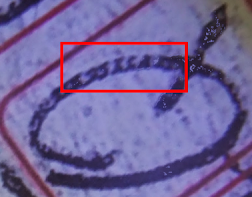Based on newly emerged information, we now have a much clearer idea of where and when Jessica Harkness first acquired the name JESTYN.
In the end, the story of Jestyn turns out to be relatively straightforward but for all of the reasons it had become entangled in myth, misunderstanding and pure guesswork. As you might expect, this discovery has an impact on much earlier posts about this name.
ORIGINS OF THE NAME JESTYN
The name JESTYN is the English version of the Welsh name IESTYN ( Pronounced YESTYN). The Welsh Alphabet has 29 letters with the letter J in welsh being a 'borrowed' letter in that is used mostly in English words such as Jurist. It is to be found in the name of a small village in Angelsey, North Wales, called LLANIESTYN which is home to a Church named after St. Iestyn who lived in the 7th Century. There is a second Church in the Welsh County of Gwynedd bearing the same name. The man, Iestyn, is said to have been descended from Royalty who once ruled in Cornwall. Iestyn was a confessor and a man of great standing in Welsh history although his named day, October 10th, is no longer celebrated.
There doesn't immediately appear to be a connection between the name Jestyn and why it was chosen by or for Jessica in her dealings with Alf Boxall and Tom Musgrave.
THE NEW INFORMATION
CONFIRMED: Stuart Littlemore in his notes specifically mentions 1944 as the year that Jestyn was introduced. He further confirmed this date in his questions to the RNSH, the year 1944 was key.
This then answers the question, just where and when was the name JESTYN first used?
Stuart Littlemore Notes:
UPDATE #2
- Stuart refers to Alf having worked with an intelligence unit, 'just before you came to Sydney and met the girl at the Clifton Gardens hotel'
- According to Alf's service record, he left his duties with the North Australia Observer Unit, which had Intelligence gathering amongst its activities, in March 1944 and was posted to NSW May 1st 1944. The meeting took place just after Alf arrived in Sydney. That gives us the year of the first meeting as being 1944.
- Moving on to what is believed to be the second meeting, and again according to Alf's service record, he was to go overseas in September 1945.
- According to the accounts within the Inside Story documents, Jestyn gave the copy of the Rubaiyat with the Verse 70 inscription to Alf because he was going overseas, this would infer that it was 1945 when he was given the book because it was in September 1945 that Alf went to Moresby.
This was the first time that the name JESTYN appears anywhere in the documents surrounding the Somerton Man case.
As far as I have been able to ascertain, the name JESTYN was never used at any time as a nickname by JESSICA HARKNESS.


























































